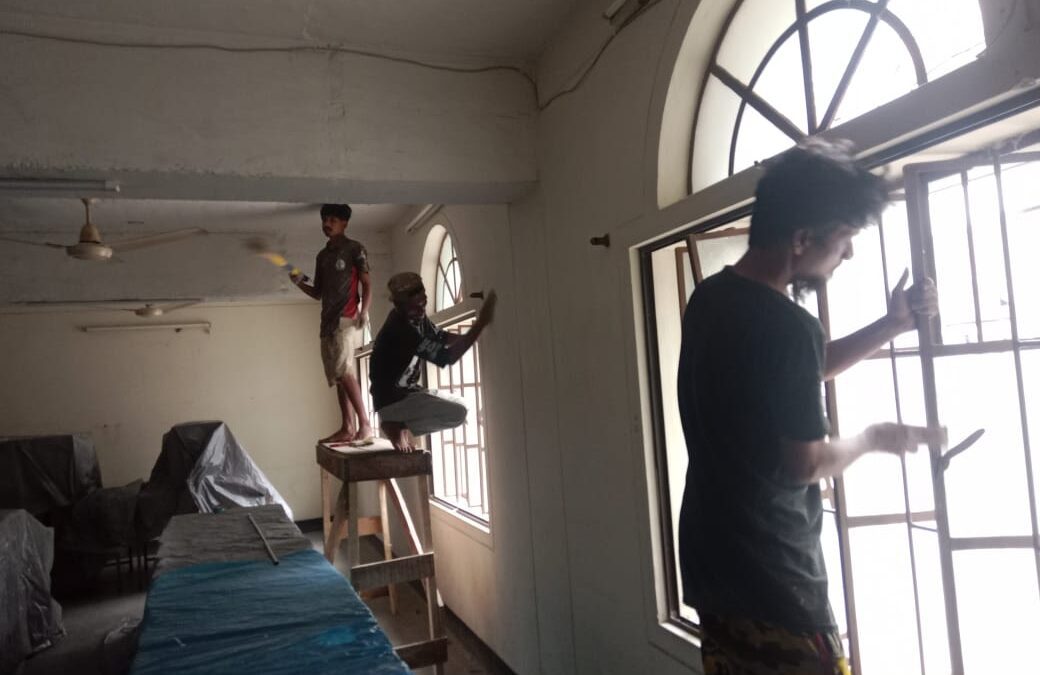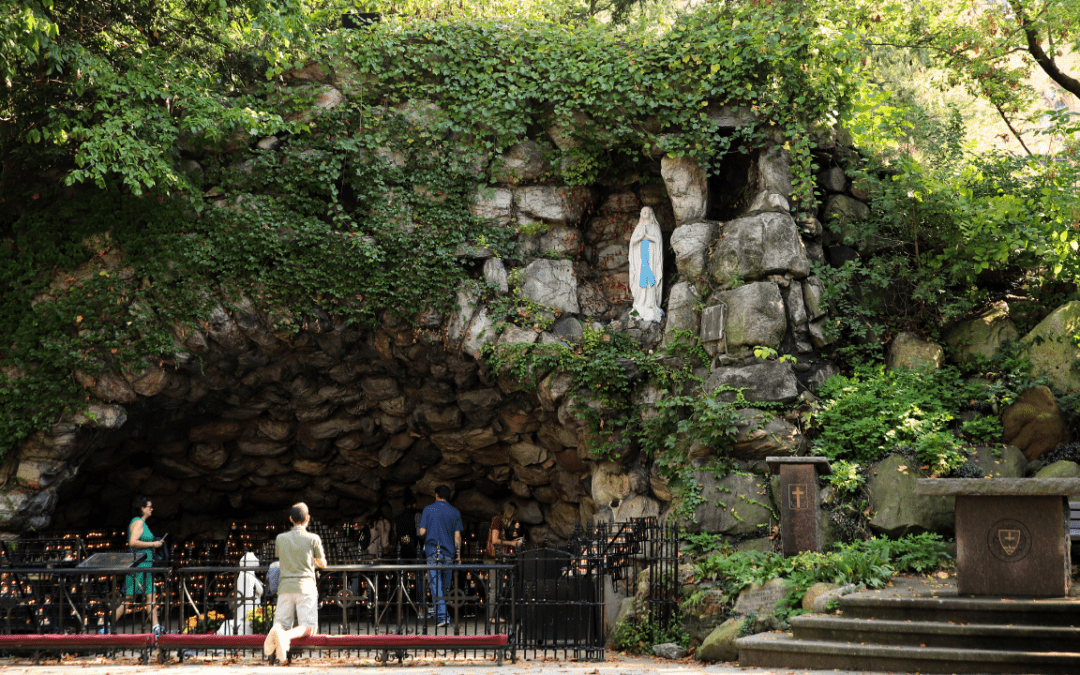I vividly remember a homily I gave at St. Ignatius Martyr Parish in Austin, Texas, during my deacon year on March 24, 2020. Does that date strike a bell? It was the very beginning of the COVID pandemic! The first reading in Mass on that day was what we read this Lent on April 1st—the vision from the prophet Ezekiel of a little stream flowing out of the door of the temple in Jerusalem. That little stream flows down the temple mount into the desert east of Jerusalem, and it gets wider and deeper as it goes. Ezekiel says that eventually the stream turns into a mighty river, and trees sprout forth on both sides of the shore, giving life to the desert. Those trees bear fruit not just once a year, but every month, for they are watered by “the flow from the sanctuary.” The leaves of those trees serve as medicine. Sounds like good news as we entered the desert of the pandemic: a promise of endless food amidst the empty shelves in the supermarkets of those first weeks and effective medicine for an unwieldly virus!
Yet, the news gets even better. The massive river flowing from the temple eventually arrives at the Dead Sea. As you may know, there are no fish in the Dead Sea, as it is inhabitable due to the high salt content. It is literally a dead sea. However, as the waters of the river of Ezekiel’s vision arrive to the Dead Sea, something extraordinary happens. It bursts into life. He says, “Wherever the river flows, every sort of living creature that can multiply shall live, and there shall be abundant fish, for wherever this water comes the sea shall be made fresh.”
This was a powerful reminder at the beginning of the COVID pandemic that we need not fear anything, even death itself, for our God has the power to turn our death into abundant and eternal life. Now, five years later, as I prayed with this reading this week, I was struck by how differently God spoke to me through this same passage. It is the beauty of Scripture: God can keep speaking directly and powerfully to us through the same passages repeated year after year.
This time, God highlighted a different detail. The angel in the vision walks with Ezekiel along the water’s edge, starting from the temple mount. The angel takes a measuring cord and measures off exactly 1,000 cubits from the temple, and then he invites Ezekiel to step into the growing river. At first, the river is only ankle deep. Then, after the angel measures another 1,000 cubits, the water is knee-deep. Then, the third measure is waist deep, and finally at the fourth measure Ezekiel must swim. Why would the angel be so careful to measure 1000 cubits each time?
The vision represents the course of our entire lives as Christians. The water sprouting forth from the temple threshold reminds us of baptism when we began our life of grace. In fact, the preference is to place the baptismal font close to the front door of the church as a reminder that it marks our entrance into the Christian life. Yet, our journey does not end there. We must walk forth step by step, being nourished in the desert of this life by the fruit of the cross in the Eucharist and healed by its leaves in Confession. After this long journey, we will eventually arrive at the “Dead Sea” when God will transform our death into abundant and eternal life.
Why all the measurements of the angel? I think the answer is this: we would like what is dead in us—our wounds, our temptations, our failures, our doubts—to be healed and to burst into life now. The pandemic may have ended, and yet we find ourselves still journeying through the desert lands of this world and our own imperfect lives. The measurements of the angel remind us that we are not made perfect in a single moment. Instead, holiness requires a step-by-step process like the river that begins as a trickle and slowly but steadily grows into a mighty river. If we remain faithful, seeking to wade into the rivers of God’s grace in the Sacraments, in prayer, and in a life of loving service to our neighbor, the waters will slowly transform us. The key is to keep walking by those grace-filled waters constantly until our dying day. Only then will His grace be made perfect in us, transforming all that is dead in us into abundant and eternal life.
This strikes me now in my assignment as a “formator.” I have the task of forming seminarians and brothers in our international house of formation in Santiago, Chile. We have men in formation here that come from Haiti, Mexico, Peru, the United States, and—hopefully soon—Chile. As a formator, I long that our men would reach perfection now. I long that they might be transformed suddenly into perfect images of Jesus Christ. Yet, the angel in Ezekiel’s vision reveals that our Christian life does not suddenly arrive at perfection like that—not for them nor for me. Sanctity is a step-by-step process. As a formator, I must trust in the slow, gentle, and yet steadily increasing flow of God’s grace, which transforms the men and me as we strive together to draw near His life-giving waters day in and day out. Our men in formation here and I will not arrive at perfection until we’ve journeyed all the way to our dying day.
If you are discerning or perhaps if find yourself stuck on the journey of this Christian life, do not despair. You do not have to reach the destination in one great leap, nor do those around you. We simply need to walk by the rivers of God’s grace day by day. Ask the angel of the Lord to measure the way for you, so you do not get frustrated with the slow process of grace. Instead, let the angel invite you to each new step with trust, patience, and peace that you will arrive secure to your Destination.
Fr. Zach Rathke, C.S.C.
Published on April 2, 2025




